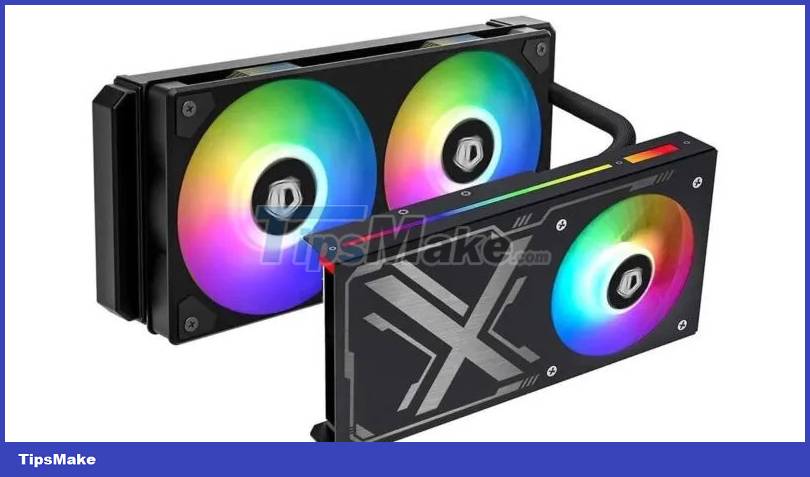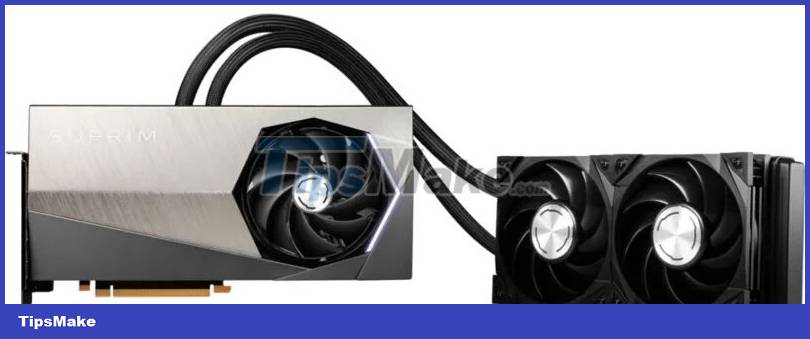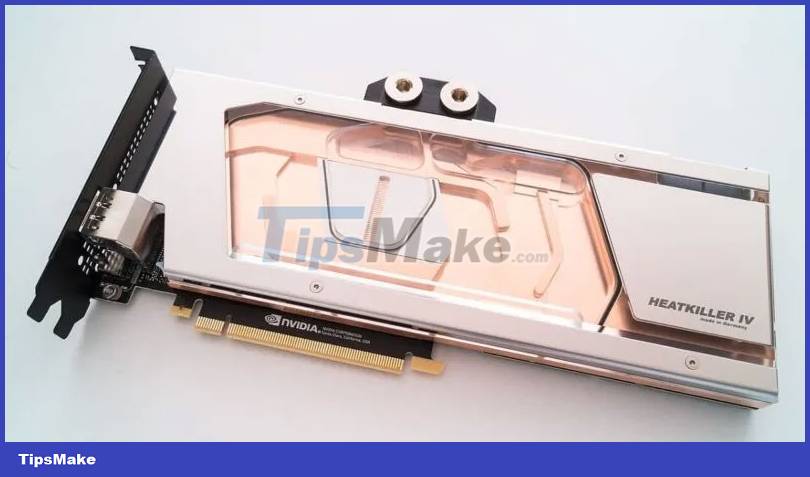Should GPUs be liquid-cooled for better performance?
Your graphics card largely determines the performance of your gaming PC. Modern graphics cards from Nvidia and AMD often include powerful heatsinks and cooling fans to keep your GPU cool under load. But liquid GPU cooling offers an alternative to cool your graphics card and prevent throttling. Whether or not you should cool your GPU depends on what you intend to achieve and the level of complexity you're comfortable with.
What effect does liquid GPU cooling have?
GPU cooling in 2023 requires a well-integrated cooling solution on the graphics card, plus a case with good airflow. While the safe operating temperature for most graphics cards is around 80°C at most, many models will automatically reduce performance if temperatures rise, reducing performance in real time.
Liquid GPU cooling uses liquid to dissipate heat generated by the graphics card. This method can reduce your GPU temperature by up to 20°C. Water cooling the GPU also eliminates much of the noise of traditional air-cooled cards.

In terms of gaming performance, frames per second (FPS) remains more or less the same between air-cooled and liquid-cooled models of the same GPU. The AIB brand you choose doesn't really make any difference to the liquid cooling benefits you can get from the card. However, you can achieve better gaming performance with water cooling of the GPU, as the card will automatically increase the clock speed due to the extra heat dissipation space. And if you're overclocking your graphics card, liquid cooling will maximize your graphics card's performance even further.
Water cooling for GPUs is still used by enthusiasts mainly because of the cost and complexity that comes with it. However, manufacturers are developing high-end graphics card models with integrated liquid cooling to meet the needs of this small but growing segment.

How to cool GPU
When deciding on water cooling for your graphics card, you have three methods to choose from:
- Buy custom-cooled graphics cards with pre-assembled heatsinks, pumps, hoses, and other accessories. You just need to plug it in and install the radiator into the case and you're done.
- Buy an AIO GPU cooler for your current graphics card. This method is significantly cheaper but more complicated, as it is sometimes difficult to find a compatible AIO solution for your graphics card brand and model. Even popular AIO GPUs are not fully compatible with all graphics card models. Additionally, many devices only come into contact with the GPU die, leaving VRAM and other components on the card's PCB inadequately cooled.
- Choose to use a custom water cooling ring for best results. This is probably the most complicated and expensive water cooling method for GPUs. Some people make a loop that includes the motherboard, and .

Whichever method you choose, make sure your case is compatible with the components you purchase. With an AIO, you will need space to install a heatsink. For a custom cooling loop, you must ensure there is enough room inside to accommodate the tank, hoses, and radiator.
Should GPUs be liquid cooled?
Liquid GPU cooling provides huge benefits to GPU temperatures, audio, and performance. If you're willing to invest the time and money into this endeavor, you can even get a PC that looks like a work of art.
But liquid cooling isn't perfect either. Choosing a custom cooling card, AIO cooler, or custom water cooling loop is quite challenging and requires many considerations.
First, you're investing more money that could have been used to buy a more powerful graphics card in the first place.
Second, you need to remove your graphics card to install the AIO or custom cooling loop. Technically, this doesn't void your warranty in most cases, but it's still a complicated process that can damage some components of the card if you're not careful. In such cases, the manufacturer's warranty will not cover damages caused by this process.
And you end up creating additional potential failure points in components like pumps, radiators, water stops, etc.

If you don't intend to overclock your graphics card or don't particularly care about temperatures and fan noise as long as performance isn't affected, water cooling your GPU doesn't make much sense, either. financially and in other aspects.
For those aiming for the best audio, thermal performance, and aesthetics, water cooling the GPU makes perfect sense, as long as you can accommodate the cost and technical work required. .
You should read it
- Air conditioner suddenly not cool? The cause and how to fix it
- How to use PC cooling fan for optimal efficiency
- MIT makes a material that keeps it cool without electricity
- Winter hot showers are great, but don't abuse them
- How to cool down the computer - CPU laptop / PC when it is too hot
- Computer cooling solutions on summer day
- How to Be Cool and Laid Back
- Instructions for looking up a fined vehicle
May be interested
- How to overclock RAM easily with AMD Ryzen Master
 fortunately, users of windows computers running amd ryzen processors can use ryzen master to easily overclock ram without touching the bios.
fortunately, users of windows computers running amd ryzen processors can use ryzen master to easily overclock ram without touching the bios. - Qualcomm launches Snapdragon X Elite, 'most powerful and efficient' CPU for Windows
 qualcomm technologies has officially launched snapdragon x elite, the long-rumored and long-awaited processor for personal computers.
qualcomm technologies has officially launched snapdragon x elite, the long-rumored and long-awaited processor for personal computers. - How to Set Audio Tracks Automatically on VLC
 if you have never watched a movie or tv show with multiple audio tracks on vlc, you will probably have a lot of trouble choosing the audio for each episode. for example, your favorite japanese animated movie keeps playing the japanese audio version while you want to watch the movie with vietnamese audio. however, the process of setting the default language is quite simple. today's tipsmake will show you how to do that.
if you have never watched a movie or tv show with multiple audio tracks on vlc, you will probably have a lot of trouble choosing the audio for each episode. for example, your favorite japanese animated movie keeps playing the japanese audio version while you want to watch the movie with vietnamese audio. however, the process of setting the default language is quite simple. today's tipsmake will show you how to do that. - How to Copy Music to a Portable Storage Device
 you can use a usb portable storage device to quickly copy music from one computer to another. this is a convenient way to share music with friends or listen to music on a usb-enabled audio device, or simply create a backup. if the usb drive is not working properly, you will need to reformat it.
you can use a usb portable storage device to quickly copy music from one computer to another. this is a convenient way to share music with friends or listen to music on a usb-enabled audio device, or simply create a backup. if the usb drive is not working properly, you will need to reformat it. - How to Convert CDA to MP3 Format
 today's tipsmake will show you how to convert cda format to mp3 using itunes. cda is a disc file format and cannot be played on a computer without a cd, while mp3 is a file that can be played on almost any platform. you can use itunes on windows and mac computers, or download the free any audio converter app to convert cda files.
today's tipsmake will show you how to convert cda format to mp3 using itunes. cda is a disc file format and cannot be played on a computer without a cd, while mp3 is a file that can be played on almost any platform. you can use itunes on windows and mac computers, or download the free any audio converter app to convert cda files. - How to Replace Keys on a Keyboard
 if you have tried to reinstall a key that fell off the keyboard many times without success, don't give up hope. what you need is patience and focus. today's tipsmake will show you how to reinstall any key on a laptop or desktop keyboard.
if you have tried to reinstall a key that fell off the keyboard many times without success, don't give up hope. what you need is patience and focus. today's tipsmake will show you how to reinstall any key on a laptop or desktop keyboard.






 AMD unveils Radeon RX 6900 XT liquid cooling version
AMD unveils Radeon RX 6900 XT liquid cooling version Successfully formulated, programmable, liquid metal fabrication that can conduct electricity
Successfully formulated, programmable, liquid metal fabrication that can conduct electricity Liquid heat sink
Liquid heat sink Terrified, watching the gruesome black liquid 'creep' into its skull
Terrified, watching the gruesome black liquid 'creep' into its skull Cryptocurrency exchange Liquid had $90 million stolen by hackers
Cryptocurrency exchange Liquid had $90 million stolen by hackers